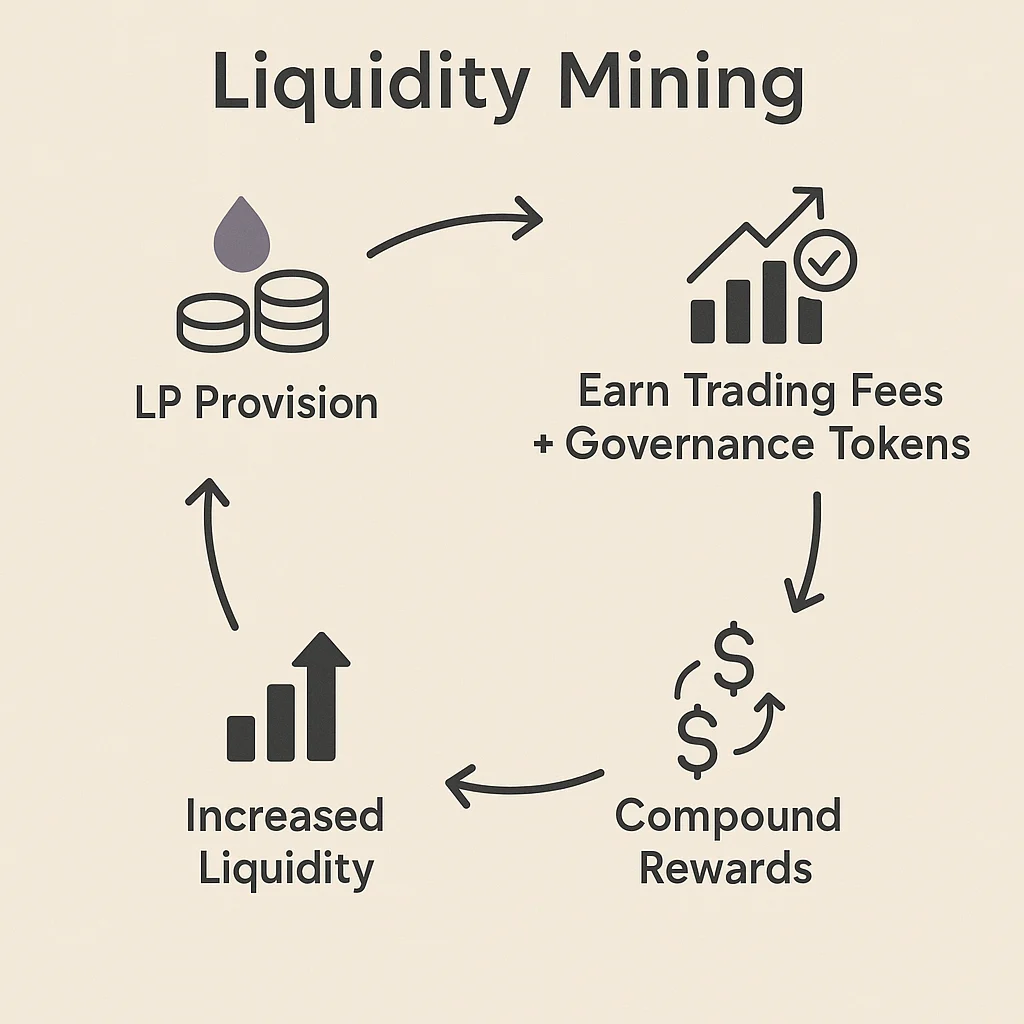Liquidity Mining
Liquidity Mining: Earning Rewards for Providing Liquidity
Liquidity mining rewards users who provide capital to DeFi protocols with governance tokens. It’s like getting paid to be the house money at a casino.
Liquidity mining is a DeFi incentive mechanism where protocols distribute governance tokens to users who provide liquidity to their platforms. Users earn both trading fees and token rewards for supplying capital to liquidity pools.
How Liquidity Mining Works
Yield farming involves providing liquidity to automated market makers, lending protocols, or other DeFi applications in exchange for native token rewards.
Emission schedules control how many tokens get distributed and over what timeframe, often decreasing over time to prevent excessive inflation.
Staking rewards supplement trading fees with governance tokens, creating additional income streams for liquidity providers beyond fee sharing.

Real-World Examples
- Uniswap’s UNI distribution rewarded early liquidity providers with governance tokens worth thousands
- Compound’s COMP mining launched the DeFi summer of 2020 with lucrative token rewards
- SushiSwap vampire attack used higher liquidity mining rewards to steal liquidity from Uniswap
Why Beginners Should Care
High yields during protocol launches can provide exceptional returns, but these often decrease rapidly as more users participate and token prices stabilize.
Token risk means liquidity mining rewards may become worthless if governance tokens lose value, potentially wiping out gains from fee earnings.
Impermanent loss still applies to liquidity mining positions, requiring careful analysis of whether token rewards compensate for potential price divergence losses.
Related Terms: Yield Farming, Liquidity Pool, Governance Token, Impermanent Loss
